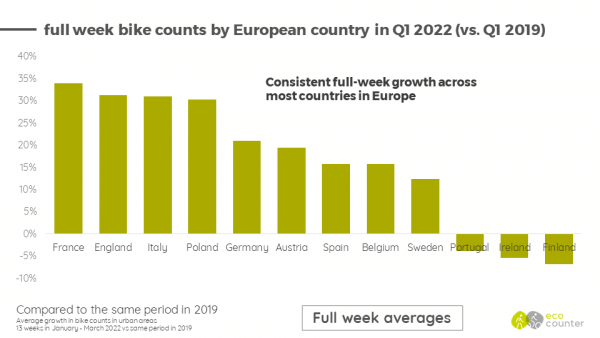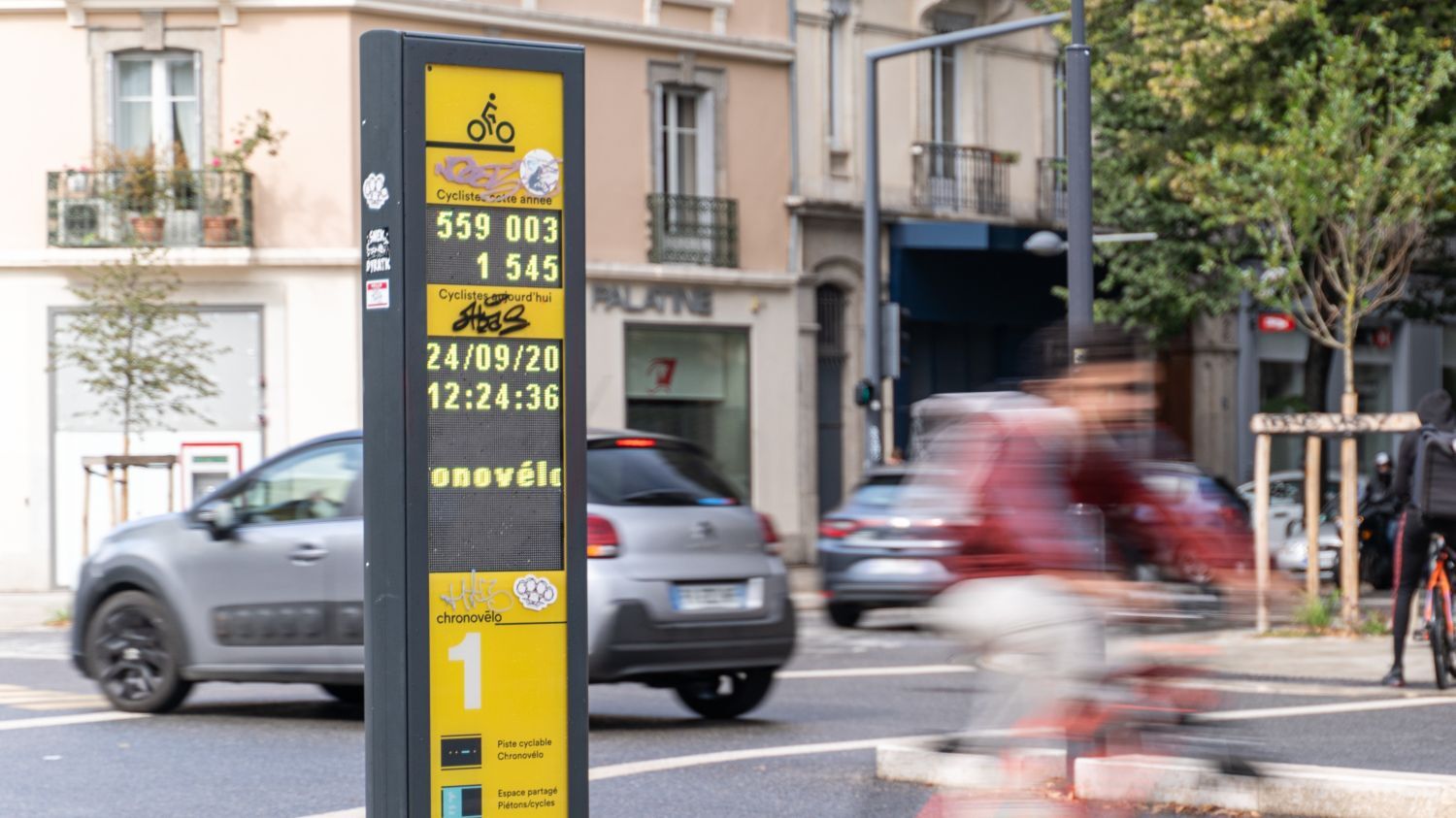In order to obtain a more exhaustive vision, we have separated the analyses, observing on the one hand the urban sites and the daily cycling practice, and on the other hand the cycle tourism practice on different European EuroVelo cycle tourism routes.
Report on the first quarter of 2022 – daily cycling
Cycling on weekdays
While the year 2021 was rather stable compared to 2019 for weekdays, the first quarter of 2022 stands out clearly with an increase in cycling (compared to the first quarter of 2019) in 9 out of 12 countries studied. The countries with the largest increase in bicycle traffic are Poland, Italy and France.

Cycling on weekends
On the other hand, weekend cycling has increased significantly in 2020 and 2021 (most likely driven by leisure cycling as a decompression activity). This increase is clearly not about to slow down: weekend day cycling is still increasing in all countries surveyed, compared to 2019. Growth rates are particularly impressive in England with +64% increase between 2019 and 2022.

Global bicycle ridership
When analyzing the whole week for all countries, the overall picture of bicycle use remains very positive. In 9 countries surveyed for a total of 12, cycling in the first quarter of 2022 is up from 2022. And the increase is not small: from +34% in France to +12% in Sweden.

The average increase in Europe is +16%.

Some perspective on growth rates: average counts per site per country (2021)
It is clear that a growth rate of 50% does not mean the same thing if the traffic is 100 passages or 1,000 passages. For this reason, we have calculated the average counts per counting site per country, to give some perspective. Here are the results as a reminder:

NB: the average traffic observed over the first quarter is not yet representative of the whole year. We can see that traffic in the first three months of the year represents between 8% of total traffic (for Sweden) and 18% (for Italy). The update of these data for the second half of the year will provide more information on bicycle use in 2022, compared to previous years.
Want to know more?







